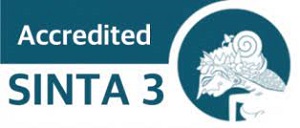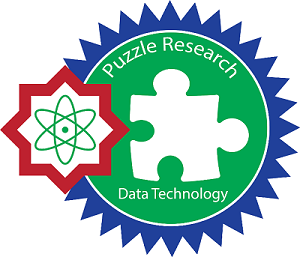ADDITIONAL MENU
Implementation of Supervised Learning Method In Grapevine Leaf Classification
Abstract
Grapevine leaves are a type of leaf variety that is difficult to identify because it will take time if processed manually so research will be carried out using the help of machine learning. This research aims to classify 5 varieties of grapevine leaves using orange data mining and several classification methods namely k-Nearest Neighbors (kNN), logistic regression, random forest and support vector machine (SVM). The dataset used is 500 images and 5 classes where each class consists of 100 images, namely Ak (100), Buzgulu (100), Ala_Idris (100), Dimnit (100), and Nazli (100). The stages in the analysis process are to enter the image into orange data mining by passing several stages so that the image dataset can be processed and read on the test and score so that the confusion matrix can be obtained. The results of the research conducted using orange data mining show that classification using logistic regression gives the best results at a precision value of 0.848% and a recall value of 0.847%. This research shows that classification using orange data mining also provides good results, besides that this research can also help in the classification process so that it does not require a long time.
Keywords
Classification; Grapevine Leaf; Machine Learning; Supervised Learning Method
Full Text:
PDFReferences
T. Banjanin, N. Uslu, Z. Vasic, and M. M. Ozcan, “Effect of grape varieties on bioactive properties, phenolic composition and mineral contents of different grape-vine leaves,” J. Food Process. Preserv., vol. 45, no. 2, pp. 0–2, 2021,
N. Huda, A. Mahiruna, W. Sulistijanti, R. Chandra, and N. Santi, “Performance Analysis of InceptionV3 Convolutional Network Used for Grapevine Leaves Varieties Classification,” vol. 5, no. 2, pp. 48–54, 2023.
S. Hartono, H. Sujaini, and A. Perwitasari, “Komparasi Algoritma Nonparametrik untuk Klasifikasi Citra Wajah Berdasarkan Suku di,” J. Edukasi dan Penelit. Inform., vol. 6, no. 3, pp. 337–343, 2020.
R. C. Gonzalez and R. E. Woods, Digital Image Processing, 4e. 2018.
Ö. Özaltın and N. Koyuncu, “A Novel Feature Selection Approach-Based Sampling Theory on Grapevine Images Using Convolutional Neural Networks,” Arab. J. Sci. Eng., 2024, [Online]. Available: https://doi.org/10.1007/s13369-024-09192-2
I. Kunduracioglu and I. Pacal, “Advancements in deep learning for accurate classification of grape leaves and diagnosis of grape diseases,” J. Plant Dis. Prot., vol. 131, no. 3, pp. 1061–1080, 2024, [Online]. Available: https://doi.org/10.1007/s41348-024-00896-z
M. Koklu and I. Cinar, “Determination of Effective and Specific Physical Features of Rice Varieties by Computer Vision In Exterior Quality Inspection,” Selcuk J. Agric. Food Sci., vol. 35, no. 3, pp. 229–243, 2021,
S. M. Jaisakthi, P. Mirunalini, and D. Thenmozhi, “Grape Leaf Disease Identification using Machine Learning Techniques,” 2019 Int. Conf. Comput. Intell. Data Sci., pp. 1–6, 2019.
R. S. Pachade, D. A. Sharma, and D. M. Patil, “Grape Leaf Disease Detection Using Deep Learning Based VGG16 Model,” vol. 12, no. 5, pp. 1485–1495, 2023.
M. A. Hasan, D. Riana, S. Swasono, A. Priyatna, E. Pudjiarti, and L. I. Prahartiwi, “Identification of Grape Leaf Diseases Using Convolutional Neural Network,” J. Phys. Conf. Ser., vol. 1641, pp. 1–7, 2020,
H. A. Ahmed, H. M. Hama, S. I. Jalal, and M. H. Ahmed, “Deep Learning in Grapevine Leaves Varieties Classification Based on Dense Convolutional Network,” J. Image Graph., vol. 11, no. 1, pp. 98–103, 2023,
H. Sujaini, “Sistem Analisis Citra Alat Musik Tradisional dengan Metode k-Nearest Neighbor , Random Forest , dan Support Vector Machine,” J. Sist. Inf. Bisnis, vol. 02, pp. 185–191, 2019.
V. Sajwan and R. Ranjan, “Classifying Flowers Images by using Different Classifiers in Orange,” Int. J. Eng. Adv. Technol., vol. 8, no. 6, pp. 1057–1061, 2019,
A. Fauzi, R. Supriyadi, and N. Maulidah, “Deteksi Penyakit Kanker Payudara dengan Seleksi Fitur berbasis Principal Component Analysis dan Random Forest,” vol. 2, no. 1, 2020.
R. Ardiansyah, L. A. S. I. A, and A. S. Rachman, “Klasifikasi Penyakit Daun Anggur Menggunakan YoloV4 dan OpenCV Pada Aplikasi WEB,” 2019.
A. G. Sooai, P. A. Nani, and N. M. R. Mamulak, “Klasifikasi Citra Daun Anggur Menggunakan SVM Kernel Linear,” Journa Inf. Technol. Comput. Sci., vol. 8, no. 1, pp. 19–26, 2024,
A. B. Musa, “Logistic Regression Classification for Uncertain Data,” J. Math. Stat. Sci., vol. 2, no. 2, pp. 1–6, 2022.
A. Indrasetianingsih, F. Fitriani, and P. Junita, “Klasifikasi Indeks Pembangunan Gender Di Indonesia Tahun 2020 Menggunakan Supervised Machine Learning Algorithms,” vol. 4, no. September, pp. 129–136, 2021,
N. D. Azzahra, Ambarwati, A. Desiani, S. I. Maiyanti, and I. Ramayanti, “Perbandingan Algoritma K-Nearest Neighbor Dan Logistic Regression Dalam Klaasifikasi Penyakit Kanker Serviks,” J. Energy, vol. 14, no. 1, pp. 1–8, 2024, [Online]. Available: https://ejournal.upm.ac.id/index.php/energy/ Jurnal
A. N. Yesa, H. A. Siregar, M. Z. Raditya, and I. Permana, “Comparison of Classification Algorithm Performance for Diabetes Prediction Using Orange Data Mining,” Indones. J. Data Sci., vol. 4, no. 3, pp. 176–182, 2023.
A. Navlani, A. Fandango, and I. Idris, Python Data Analysis, Third Edit. Birmingham-Mumbai: Packt Publishing All, 2021.
J. Demsar, T. Curk, C. Gorup, and M. Mozina, “Orange : Data Mining Toolbox in Python,” J. Mach. Learn. Res., vol. 14, pp. 2349–2353, 2013.
M. I. Gunawan, D. Sugiarto, and I. Mardianto, “Peningkatan Kinerja Akurasi Prediksi Penyakit Diabetes Mellitus Menggunakan Metode Grid Seacrh pada Algoritma Logistic Regression,” J. Edukasi dan Penelit. Inform., vol. 6, no. 3, pp. 280–284, 2020.
S. A. T. Al Azhima, D. Darmawan, N. F. A. Hakim, I. Kustiawan, M. Al Qibtiya, and N. S. Syafei, “Hybrid Machine Learning Model Untuk Memprediksi Penyakit Jantung Dengan Metode Logistic Regression Dan Random Forest,” J. Teknol. Terpadu, vol. 8, no. 1, pp. 40–46, 2022, [Online]. Available: https://journal.nurulfikri.ac.id/index.php/jtt
DOI: http://dx.doi.org/10.24014/ijaidm.v8i1.31633
Refbacks
- There are currently no refbacks.
Office and Secretariat:
Big Data Research Centre
Puzzle Research Data Technology (Predatech)
Laboratory Building 1st Floor of Faculty of Science and Technology
UIN Sultan Syarif Kasim Riau
Jl. HR. Soebrantas KM. 18.5 No. 155 Pekanbaru Riau – 28293
Website: http://predatech.uin-suska.ac.id/ijaidm
Email: ijaidm@uin-suska.ac.id
e-Journal: http://ejournal.uin-suska.ac.id/index.php/ijaidm
Phone: 085275359942
Journal Indexing:
Google Scholar | ROAD | PKP Index | BASE | ESJI | General Impact Factor | Garuda | Moraref | One Search | Cite Factor | Crossref | WorldCat | Neliti | SINTA | Dimensions | ICI Index Copernicus
IJAIDM Stats










